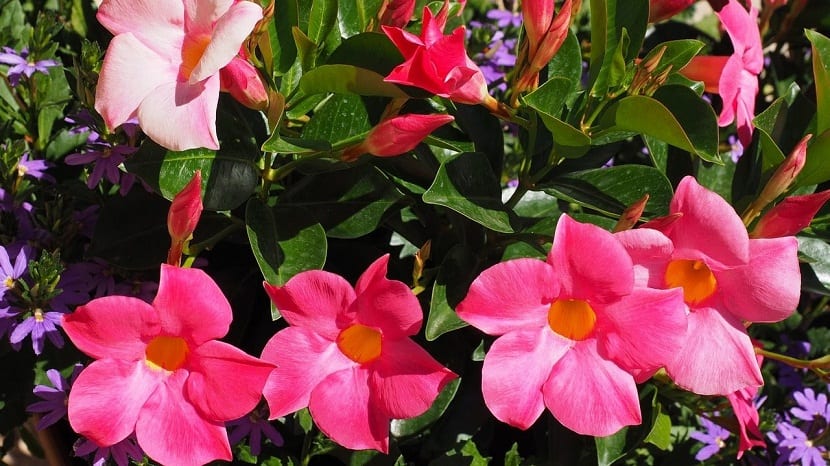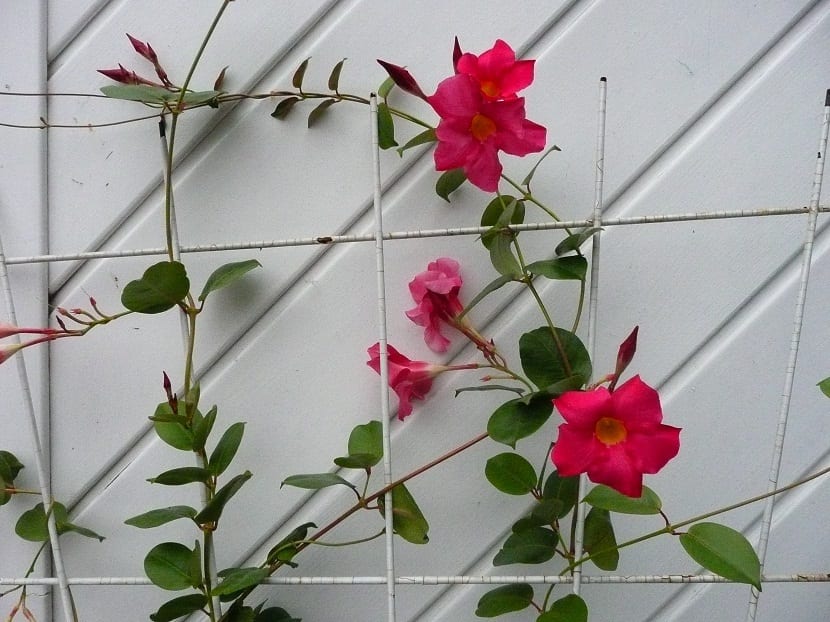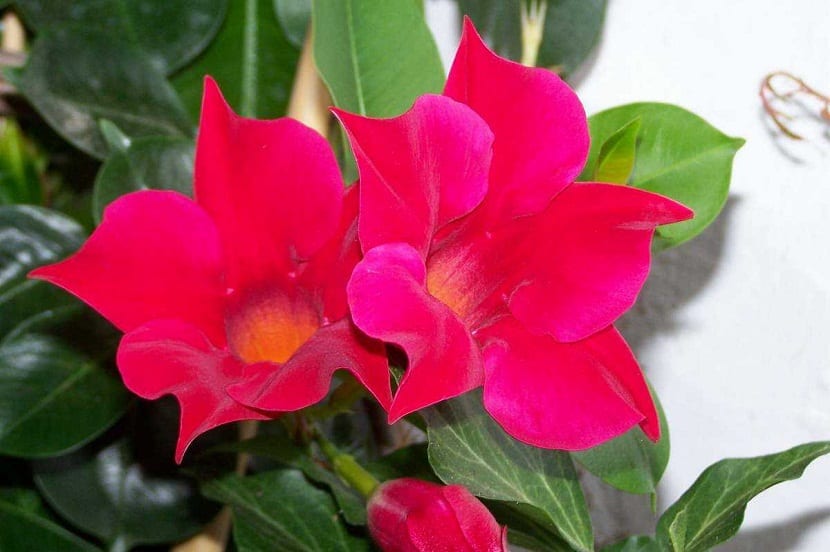
La Mandevilla sanderi It is a beautiful climbing plant of Rio de Janeiro origin. It is also known by the name of Brazilian jasmine. Its ornamental use is widespread in Rio de Janeiro, Brazil and is that this climber grows extraordinarily quickly, so it will be adorning the garden in no time. In cold climates, it is an indoor plant that, well located, will positively attract attention and offer an exquisite environment.
From

Brazil is the place of origin of the Mandevilla and owes its name to the memory of the botanist Henri Mandevilla, this being an honor that his partner John Lindley gave him. The word sanderi also comes from another botanist who introduced it to the UK by name: Henry Frederick Conrad Sander.
Characteristics of the Mandevilla sanderi
La Mandevilla sanderi it is a shrub with thick foliage two to three meters high or more if the climate is tropical, with woody stems that are quite long due to the climbing condition of the sanderi. The leaves are green and it grows in a convoluted way, holding on to some structure.
The plant has a sticky and whitish liquid that, as is common in these substances, is toxic. The roots are divided into a small and thin part and other large and thick. The latter conserve an important reserve of starch and water that allows it to withstand periods of drought very well.
This shrub has dark green leaves that are approximately 6 cm long and oval in shape. On the surface the appearance is shiny and thick. It presents the flowers in simple or axillary groups, the size is relatively large, an average of five centimeters in diameter.
The inflorescence is pink or red in color with a calyx with five lance-shaped teeth and a pink corolla. In turn, it is formed by a cylinder of about 5 mm in diameter that enlarges until ending in five semicircular lobes.
The stamens include threads located in the tube that form a ring around the head. The time when the plant presents its flowers goes from spring to fall, and they grow little by little from early summer to late winter.
Cultivation and care
In Europe and because it is a temperate climate zone, the Mandevilla sanderi it is preferably grown in indoor pots. Of course, when installing the plant inside the home, an area should be chosen where it can receive solar radiation, while avoiding strong wind currents.
The multiplication is usually done through cuttings, but this process is not easy, so it is best to acquire a plant in a nursery. It is not easy because it is originally from a tropical region and a lot of environmental care is required to protect the suckers until they are strong for transplantation.
If you want to propagate the plant, it can be done by sowing it in spring. Herbaceous cuttings in May or semi-woody in August are possible, but as mentioned above the procedure is delicate. Sowing or replanting should be done in spring, before flowering.

To locate this climbing plant In an outdoor garden, the ideal is to choose a warm and bright place, although it is necessary to warn that the sun's rays in the most intense hours can affect it negatively. As stated above drought is not a problem for this herbaceous species. On the other hand, it does not support cold climates or frost at all.
When the plant is watered it should be done almost daily, especially if the plant has flowers. In winter the water spreads well when watering and with regard to fertilizer, one can be used for flowering plants, and in spring and summer it is added once a month.
Finally, pruning is done when winter is over as this will bring a lot of flowers for the Mandevilla. Waterlogging must be avoided, but the humidity around the plant must be kept high. This will keep pests, fungi, and diseases like spider mites away. Mealybugs and whiteflies are a risk to the plant, especially during the winter or in the greenhouse.